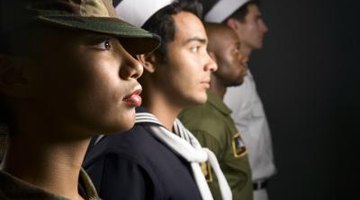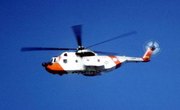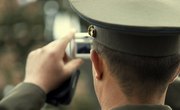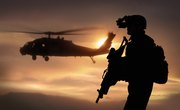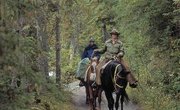Junior Reserve Officers Training Corps is a high school elective course designed to teach young men and women a combination of lifelong skills, knowledge and citizenship needed to succeed in their personal and professional lives. Students receive classroom instruction from a retired military instructor and are taught in a classroom setting. Regardless of which JROTC program a high school offers, the course curriculum emphasizes community service, teamwork and how to properly wear the JROTC uniform.
Physical Fitness
In JROTC programs, students learn the value and importance of physical exercise and good nutrition. According to the Army JROTC Leadership, Education & Training Cadet Reference, physical fitness is necessary to perform as a citizen and a leader. Students also learn the proper way of doing various exercises and how these exercises improve strength and endurance. Some of these exercises include curl-ups, pullups, shuttle runs and 1-mile run/walks. At Dixie High School JROTC in St. Petersburg, Fla., for example, students learn how to use their physical skills to successfully pass an obstacle course usually requiring rigorous jumping, crawling, climbing ropes and repelling from tall towers.
Military History
Students learn about the history of military branches throughout the world, their organizational structures and famous military figures from different eras who helped shape world events. The course curriculum requires JROTC instructors to teach students topics such as the Bill of Rights, U.S. Constitution and Declaration of Independence. Depending on the high school’s JROTC program, students learn service-specific history relevant to that service branch. For instance, in Navy JROTC programs, students learn about the history of surface warfare, which focuses on sea control and projecting a naval presence worldwide.
Precision Drills
Precision drilling requires a high degree of concentration and attention to detail. Students who pursue this extracurricular activity learn the importance of self-discipline, obeying orders and teamwork. According to Navy Installations Command, drill teams are part of the ceremonial guard where students learn to master the art of close-order drills, coordination and timing. To be successful at this type of drill, students learn the basic marching maneuvers such as right/left flank march in which the entire formation turns 90 degrees and continues marching.
Leadership Skills
Western Oregon Army ROTC asserts that JROTC students learn leadership strategies, which help them with problem-solving techniques, conflict resolution, decision-making skills and interpersonal communications skills. Many JROTC programs have leadership development training as part of the curriculum. For example, Benedictine Preparatory College in Richmond, Va. has a JROTC summer camp that introduces its cadets to leadership theory and application. The Non-Commissioned Officer Academy is a two-day course that prepares cadets to assume leadership positions as squad leaders and platoon sergeants.
Related Articles
References
Writer Bio
Kenneth Richmond is an Equal Employment Opportunity (EEO) officer, certified U.S. Navy mediator and MBTI facilitator for the federal government. He serves as the subject-matter expert and senior technical adviser to government agencies on all matters pertaining to EEO and diversity management. Richmond holds a Bachelor of Science in education, training and development and a Master of Arts in human resources development.

